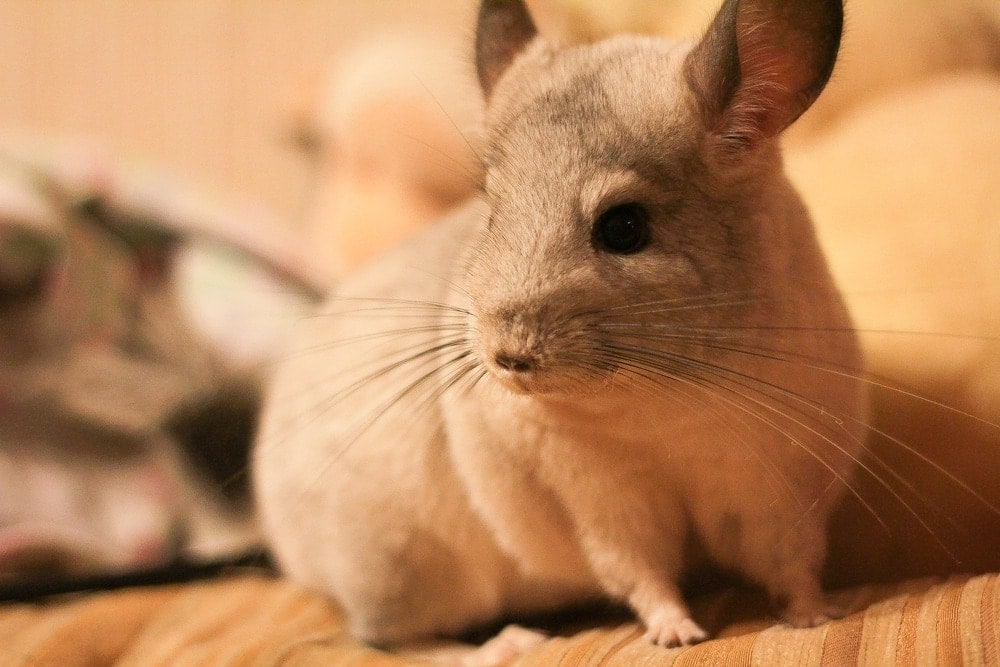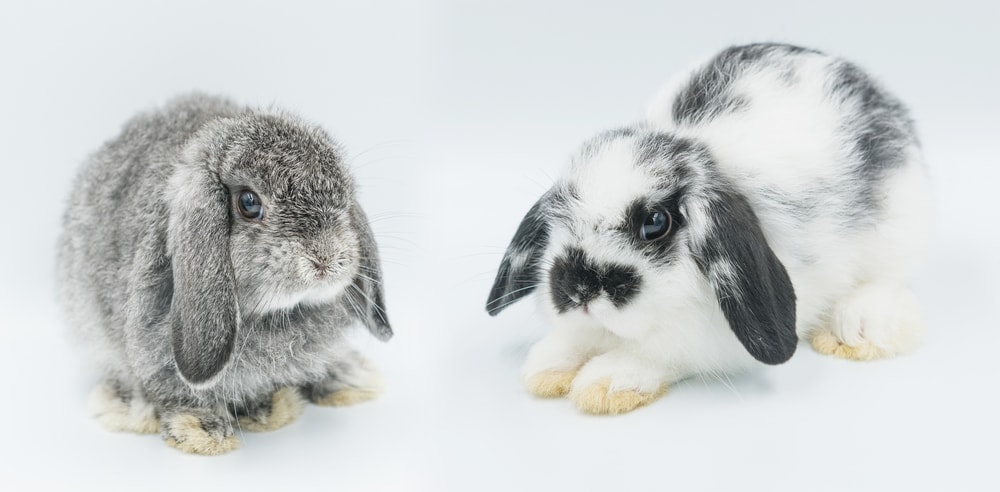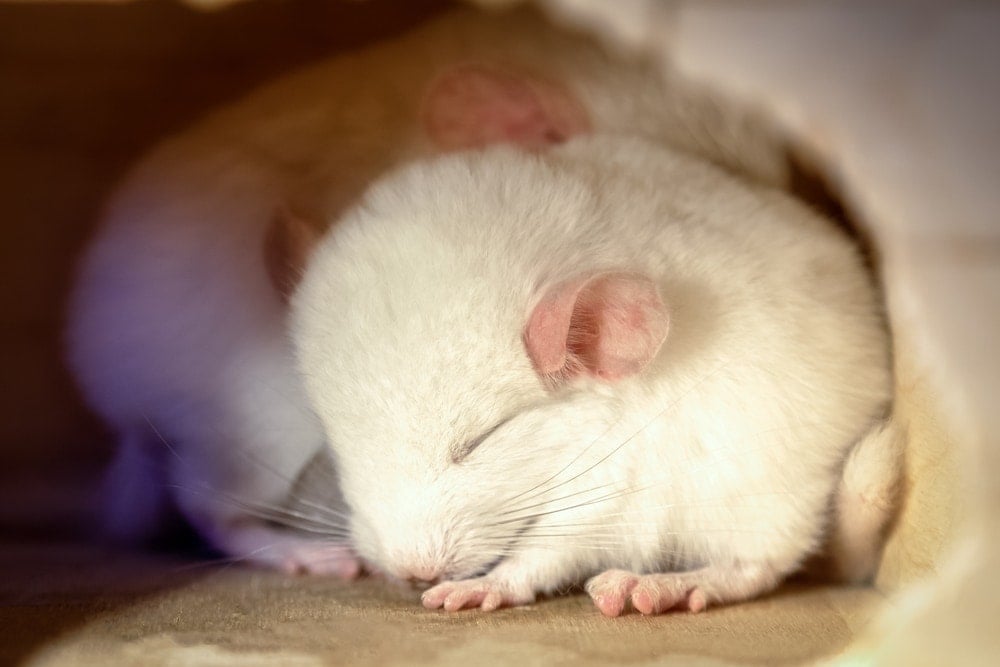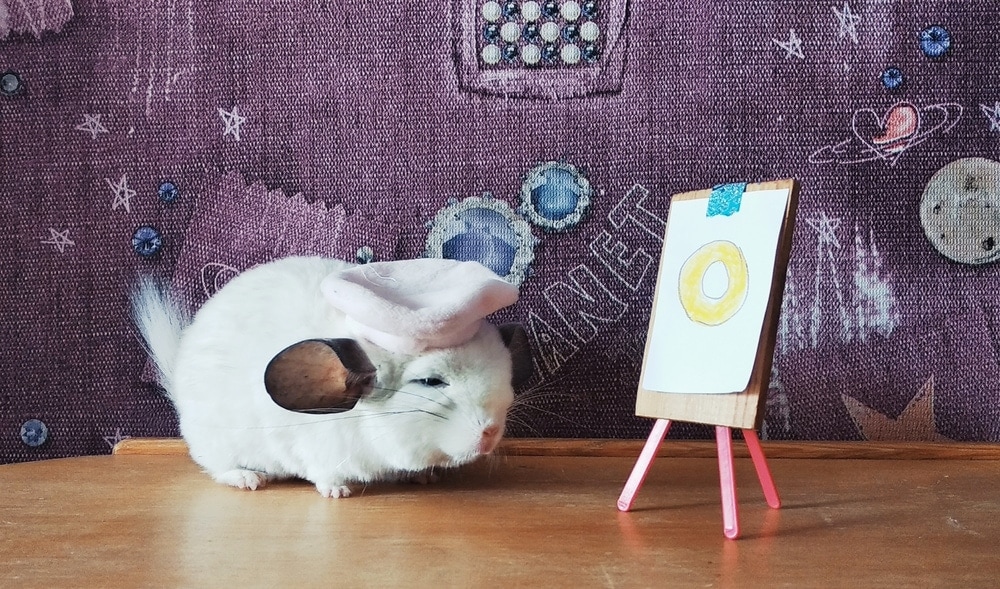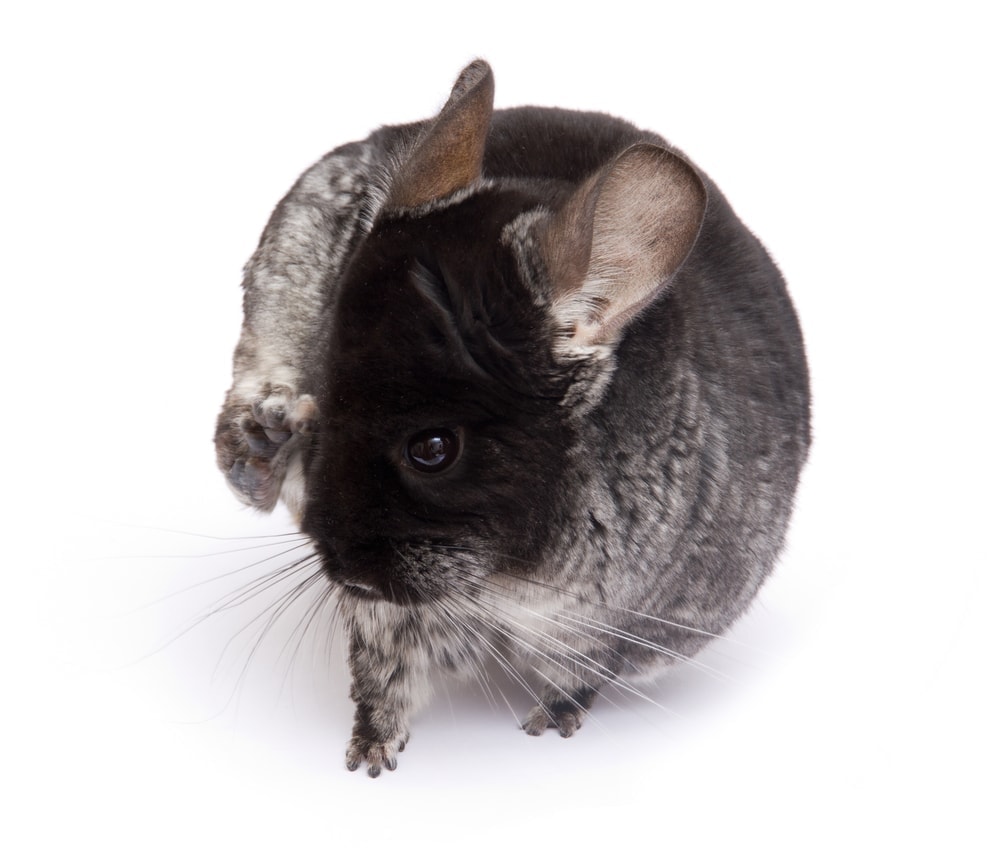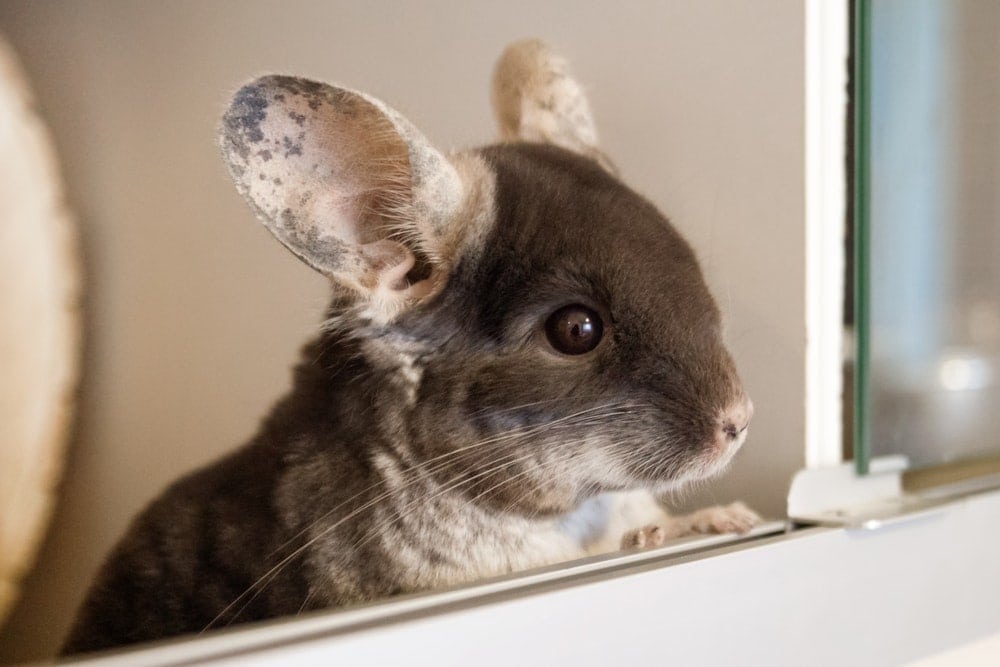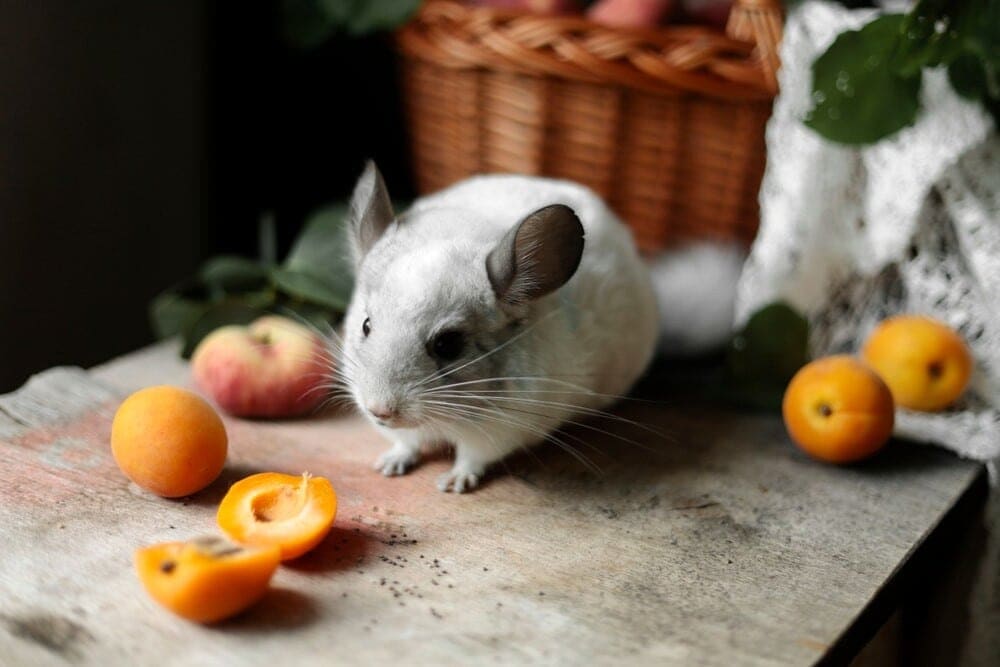Whether you already own a chinchilla or you are thinking about getting one, it is important to learn about their sleep habits.
This information is crucial for taking proper care of your fluffy pet, so you’ll need to learn all you can.
Chinchilla Sleep Positions
The most common sleep position for chinchillas is standing up on their four feet. This might sound strange, but it is perfectly natural for these animals. When your chinchilla is sleeping, you will notice their ears changing position as well. The ears go from being pointed up to going down.
Sometimes these animals will sleep on their side or back, but it is fairly uncommon. In fact, you will probably never see them do this at all.
They Aren’t Always Fully Asleep
Chinchillas aren’t always fully asleep, which is to say that they are still somewhat aware of their surroundings. They still hear sounds that are nearby and can respond quickly. This is something that has benefited these animals in the wild for a very long time. It gives them a definite edge when it comes to not getting eaten by predators.
How to Tell if Your Chinchilla is Actually Sleeping
Because chinchillas sleep standing up with their eyes open, it can be difficult to tell if they are actually sleeping. When your pet doses off, they become less responsive to their environment. You will notice that they aren’t much around much, if at all. But as we mentioned above, they still retain some level of situational awareness.
Do Chinchillas Dream?
While nobody can be absolutely sure what chinchillas dream about, it is clear that they have similar brain activity to humans while sleeping. It is likely that these animals dream about things they see on a daily basis. You may be able to tell when your fluffy friend is dreaming, as they will twitch and move around in subtle ways. This has also been observed in both cats and dogs.
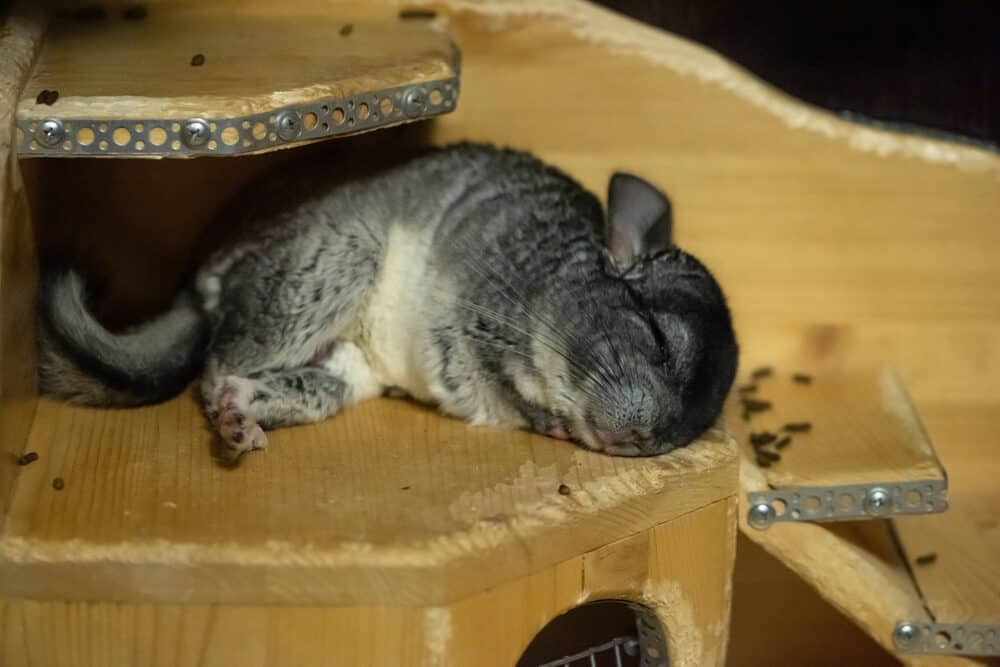
Waking up Your Chinchilla
It is not a very good idea to wake up your chinchilla if you can help it. Even a relatively small disruption in their sleep schedule/pattern can be detrimental to their overall health. There are, however, some tips you should follow if you ever need to do this.
When you need to wake up your chinchilla, you’ll want to do so gradually so as not to startle them. Speak to them in a low and quiet tone that is completely calm. After a while, they should wake up fully. Scaring them out of their slumber also raises the chances of getting bitten, which is not something you want to happen.
Creating a Suitable Sleep Environment
1. Be Careful about the Temperature
It’s crucial that you do everything possible to create a suitable sleep environment for your chinchilla. This means keeping the room their enclosure is in at a reasonable temperature. If they become too hot while sleeping, they could die. It is fairly easy for these animals to overheat, so you’ll want to keep that in mind.
Remember that you also don’t want the room to be too cold either. These animals don’t do particularly well when exposed to extreme temperatures.
2. Proper Cage Placement
You’ll also want to make a point of putting your chinchilla’s cage in an area of the house that doesn’t get a lot of traffic. The less noise there is when they are trying to sleep, the easier it will be for them to get adequate rest each day. These animals can sleep even in a noisy environment, but you should still follow this tip.
3. Get a Hammock
You might want to invest in a hammock for your chinchilla, as it can actually help them get a proper amount of rest each day. These animals love to play and sleep on hammocks. Just make sure that the hammock is sturdy and securely set up so that your pet isn’t in danger of getting injured. You should be able to find one at your local pet supply store, or online somewhere.
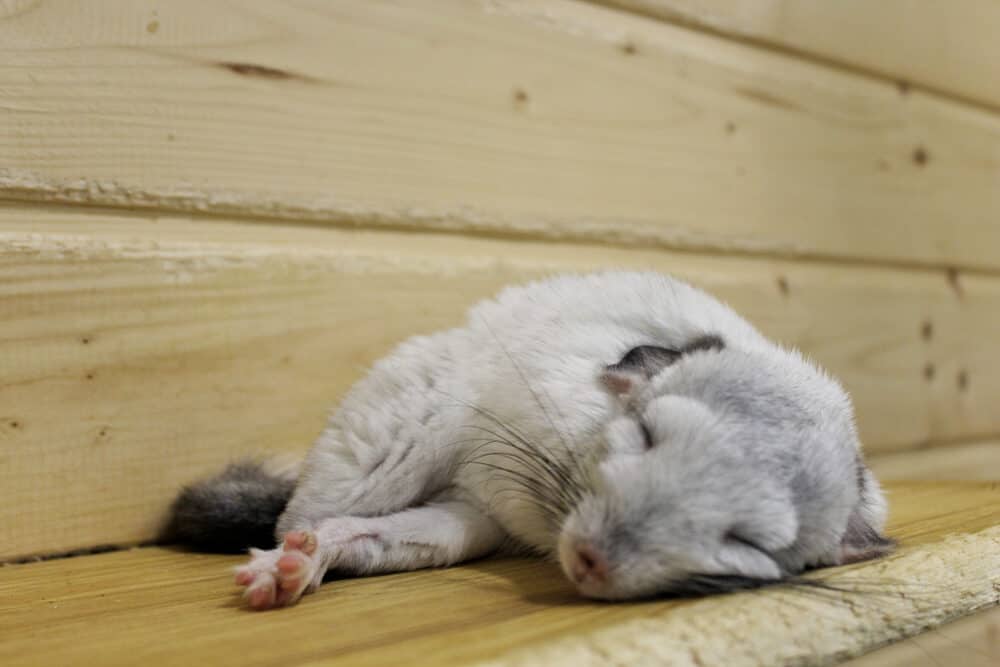
Can my Chinchilla Sleep in my Bed with Me?
Some people allow their chinchillas to sleep in bed with them, but it’s not a good idea for a couple of reasons. Allowing your pet to sleep with you allows it to roam around freely and possibly get injured. There is also a chance that you could roll over on your chinchilla and squish them in the middle of the night. It is best to keep them in their cage when sleep time rolls around.
Monitoring Your Chinchilla’s Sleep Habits
Anyone who owns a chinchilla should closely monitor their sleep habits. You’ll want to know if they are sleeping more or less than usual, as it could be a sign that something is wrong.
These animals are crepuscular, which means that they are most active in twilight hours. You are going to be asleep for when they are at their most active. It is perfectly normal for your pet to be highly active for only a few minutes at a time before going back to sleep.
Conclusion
- Chinchillas typically sleep standing up on all four of their feet with their eyes open.
- These animals sometimes sleep on their back or side, but it is not common at all.
- Your chinchilla is still somewhat aware of its surroundings even when asleep.
- If you ever need to wake up your fluffy pet, do so gently and gradually.
- Scaring your chinchilla out of its slumber can traumatize them and even result in you getting bitten.
- Keep the temperature in your chinchilla’s room at a reasonable level. It shouldn’t be too hot or cold.
- A hammock can make for a great addition to their cage. They will love to play and sleep on it.
- It is a good idea to keep your pet’s cage in a part of the house that doesn’t get a lot of foot traffic.
- Closely monitor your chinchilla’s sleep habits so you can notice if something is wrong with them.



